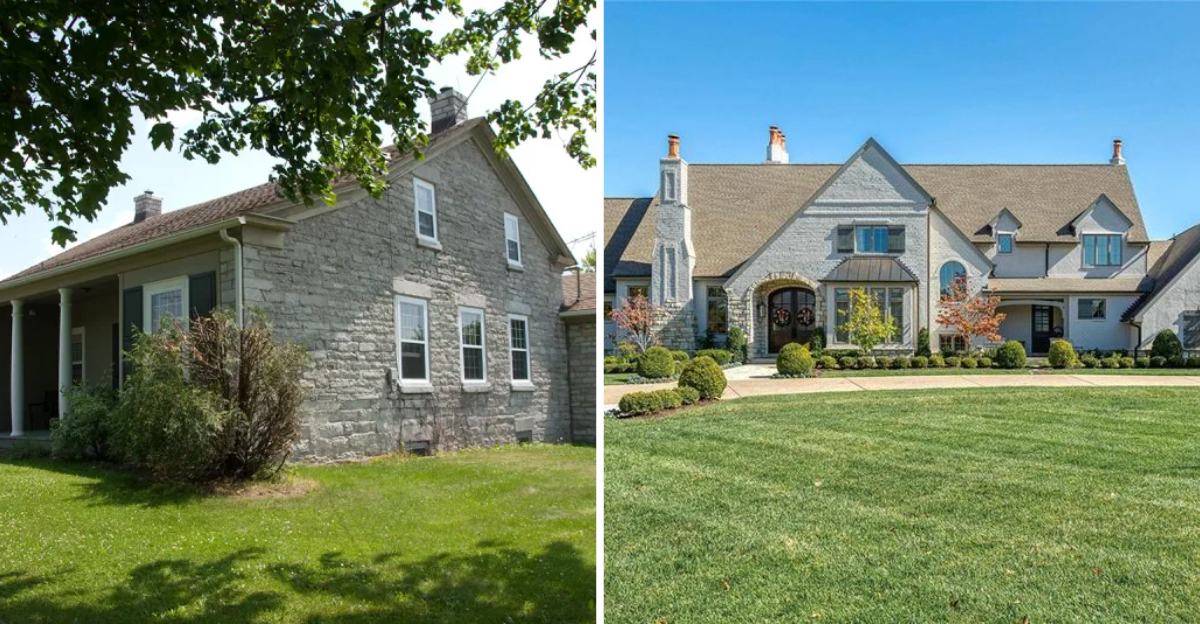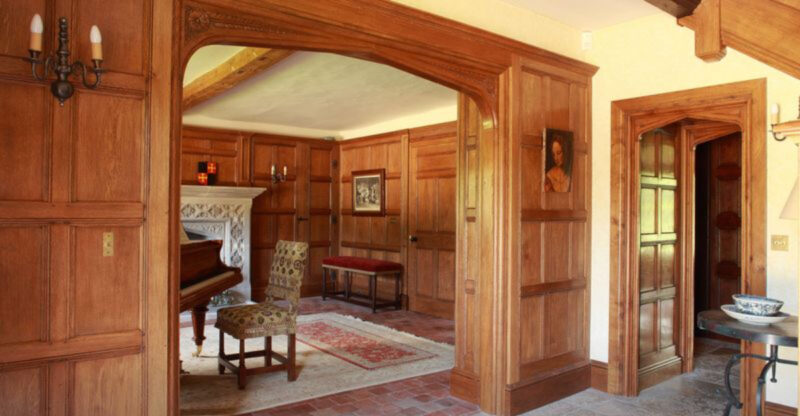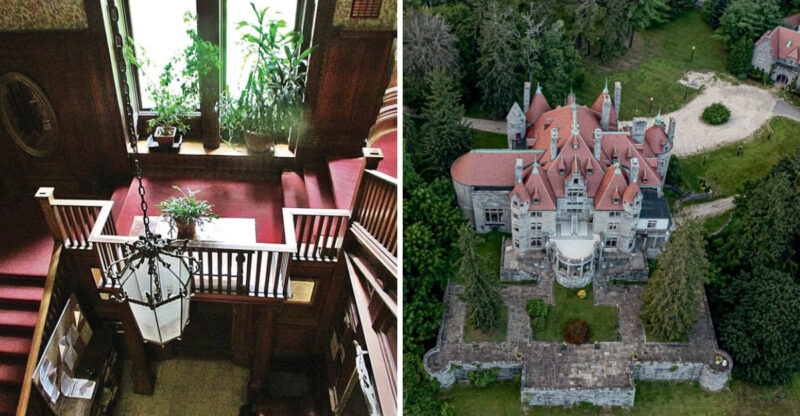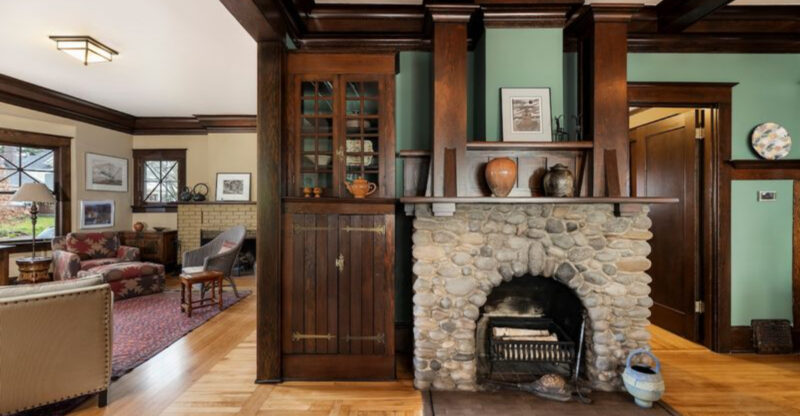9 Stone Farmhouses In Missouri That Could Inspire Nostalgia

There’s something magical about stone farmhouses that takes us back to simpler times. In Missouri, these architectural treasures stand as reminders of our rural heritage, each telling a unique story of family, farming, and frontier life.
From the rolling hills of the Ozarks to the plains of northern Missouri, these stone structures have weathered decades of storms, seasons, and change while maintaining their rustic charm.
1. St. Louis Stone Farmhouse Missouri
Just outside the bustling city limits sits a two-story marvel built in 1847 by German immigrants seeking a new life in America. The limestone walls, nearly two feet thick, have kept generations of families cool in summer and warm in winter without modern conveniences.
Walking through the hand-carved doorway feels like stepping into a time machine. The original hearth, where countless meals were prepared, remains the heart of the home. Upstairs, wavy glass windows offer views of the same rolling farmland that sustained its first owners.
Though now surrounded by suburban development, this farmhouse stands proud as a testament to craftsmanship that’s outlasted everything around it. Local preservationists have ensured its story continues for future generations to appreciate.
2. Kansas City Rustic Stone Farmhouse Missouri
Weathered fieldstone gathered from nearby creeks gives this 1880s farmhouse its distinctive patchwork appearance. Unlike many historic homes that have been modernized beyond recognition, this property maintains its authentic charm with minimal alterations.
If walls could talk, these would tell stories of the Civil War aftermath and westward expansion that shaped Missouri’s history. The wraparound porch, supported by rough-hewn oak beams, invites visitors to sit a spell just as it did for travelers a century ago.
My favorite feature is the massive stone root cellar built into the hillside behind the house. Before refrigeration, this underground room kept vegetables fresh through winter and provided shelter during tornado warnings practical solutions from a simpler era.
3. Columbia Countryside Stone Farmhouse Missouri
Nestled among ancient oak trees, this red sandstone beauty has watched over generations of Missourians since 1865. The University of Missouri actually used this property as a model farm for agricultural students in the early 1900s, teaching sustainable practices that were ahead of their time.
What makes this home extraordinary is how the original builder incorporated passive solar design principles without modern terminology. Large south-facing windows capture winter sunshine while deep eaves block summer heat clever engineering that predates energy concerns by a century.
Did you know the kitchen features a hand-dug well accessed through a trapdoor in the floor? This ingenious system allowed residents to draw water without braving harsh Midwest winters, showing how practical innovation shaped these historic homes.
4. Springfield Vintage Stone Farmhouse Missouri
Quarried limestone blocks, each hand-cut and uniquely marked by its mason, form the sturdy walls of this 1890s Ozark treasure. The craftsmanship showcases techniques brought by Scottish stonemasons who settled in southern Missouri, creating a lasting cultural legacy in architectural form.
Where most farmhouses of this era featured simple designs, this Springfield gem boasts unexpected Victorian touches like decorative cornices and arched windows. These elegant details tell the story of a family whose prosperity grew alongside their homestead, allowing them to incorporate fashionable elements into their practical rural dwelling.
I’m particularly drawn to the summer kitchen a separate stone structure that kept cooking heat away from the main house during sweltering Missouri summers. This thoughtful design solution demonstrates how our ancestors adapted to seasonal challenges long before air conditioning existed.
5. Jefferson City Historic Stone Farmhouse Missouri
Standing proudly since 1855, this river rock farmhouse witnessed Missouri’s capital city grow from a frontier outpost to a governmental center. The unusual building material smooth stones gathered from the nearby Missouri River creates walls that shimmer with subtle color variations when morning light strikes them.
History buffs will appreciate how this home served as a waystation on the Underground Railroad, with a hidden room beneath the main staircase offering shelter to those seeking freedom. Small carved symbols near the front door, nearly invisible to casual observers, once signaled safe haven to those who knew their meaning.
The original owner, a state legislator who advocated for Missouri’s public education system, designed the library with floor-to-ceiling bookshelves that still house volumes dating to the Civil War era. This room represents both personal passion and public service that shaped Missouri’s development.
6. Branson Hilltop Stone Farmhouse Missouri
Perched atop an Ozark ridge with panoramic views that early settlers must have considered heaven-sent, this 1870s homestead features locally-quarried dolomite stone that glows golden at sunset. The strategic hilltop location provided natural advantages cool breezes in summer and excellent drainage during spring downpours.
Music lovers might recognize this property from early photographs of Ozark folk musicians who gathered here for jam sessions that helped define the region’s musical heritage. The exceptional acoustics of the main room, with its barrel-vaulted stone ceiling, still attract local musicians who appreciate how sound resonates through the space.
Though modernized with careful respect for its heritage, the root cellar remains untouched, complete with handmade wooden storage bins where apples and potatoes once sustained families through long winters. The worn paths in the stone steps tell silent stories of countless trips to retrieve preserved bounty.
7. Hannibal Riverfront Stone Farmhouse Missouri
Mark Twain would recognize this 1830s limestone structure one of the oldest intact farmhouses in northeast Missouri. The property once served as a steamboat landing where farmers traded goods along the Mississippi River, connecting this rural outpost to distant markets.
Architectural historians marvel at the French Colonial influences evident in the steep roof pitch and symmetrical design, reflecting the region’s early settlement patterns. The current owners discovered hidden chambers beneath the main floor during restoration likely storage areas for river trade goods or possibly spaces used during the volatile border state conflicts.
When spring floods threatened the Mississippi Valley, this elevated stone home provided safe refuge while less substantial buildings washed away. The practical resilience built into these early structures explains why they’ve outlasted countless newer buildings, standing as monuments to pioneer ingenuity and determination.
8. Cape Girardeau Classic Stone Farmhouse Missouri
German and French architectural traditions blend seamlessly in this 1850s masterpiece built from local sandstone with distinctive reddish hues. The unusual cross-gabled roof design creates four equal facades, allowing each side of the home to capture seasonal light and breezes a sophisticated approach to climate management before modern technology.
How fascinating that the original builder incorporated stones with fossil impressions into prominent positions around windows and doorways! These deliberate placements weren’t just decorative but served as conversation pieces and teaching tools for children growing up on the farm, connecting them to the ancient history beneath their feet.
The summer kitchen remains fully functional, with its massive stone hearth still used for demonstrations during local heritage festivals. Watching bread bake in the original brick oven gives visitors a tangible connection to daily routines that structured life for generations of Missouri farming families.
9. Rolla Woodland Stone Farmhouse Missouri
Hidden among centuries-old white oaks stands this charming 1860s cottage built by early mining engineers who came to develop Missouri’s rich mineral resources. Unlike grander farmhouses, this modest dwelling showcases practical expertise perfectly balanced stone arches over windows and doors have never sagged or cracked despite 160 years of settling.
The most remarkable feature must be the spring-fed water system. Engineers channeled a natural spring through stone-lined conduits that still deliver crystal-clear water to the kitchen and bathing room. This gravity-powered plumbing predated municipal water systems by decades, demonstrating how technical knowledge transformed rural living.
Though smaller than many historic properties, the clever use of built-in furniture and storage maximizes every inch of space. Corner cupboards, window seats with hidden compartments, and wall niches show how thoughtful design made comfortable living possible even in compact quarters.






